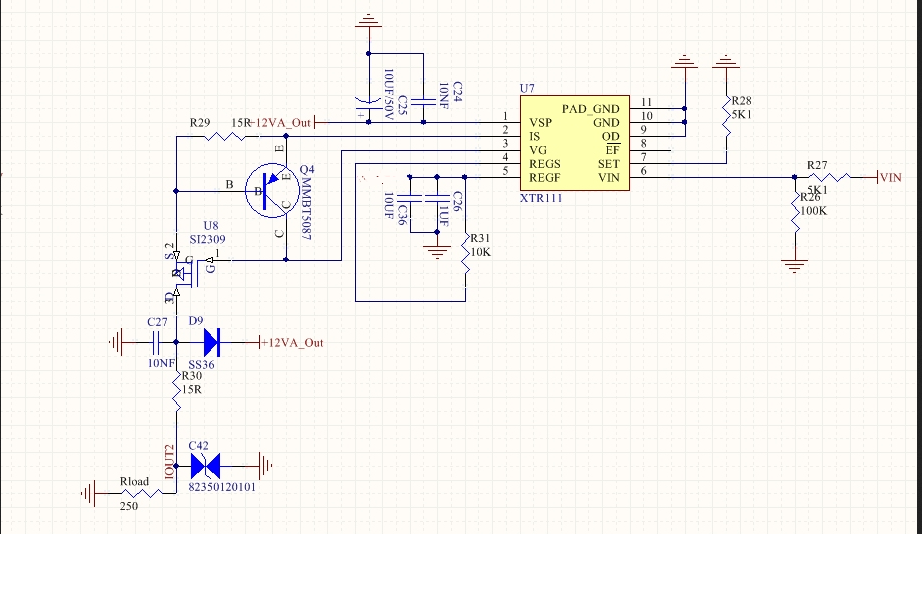art Number: XTR111
Hi team,
The customer is using XTR111. VSP is 12V. VIN is from 1V to 10V. His schematic is in the attach.
Is there any issue for his schematic?
Best Wishes,
Mickey Zhang
Asia Customer Support Center
Texas Instruments
This thread has been locked.
If you have a related question, please click the "Ask a related question" button in the top right corner. The newly created question will be automatically linked to this question.
art Number: XTR111
Hi team,
The customer is using XTR111. VSP is 12V. VIN is from 1V to 10V. His schematic is in the attach.
Is there any issue for his schematic?
Best Wishes,
Mickey Zhang
Asia Customer Support Center
Texas Instruments
Hi Mickey,
One thing worth mentioning is that D9 will only help if your supply can sink current. It also provides a path for leakage current, which will introduce error in your loop current. At room temp this error will likely be negligible, but it can become fairly significant across temperature depending on the diode. Be sure to recommend low leakage protection components if this is a concern. Additionally, it does not look like the customer is using the regulator output. If this is the case we usually recommend connecting REGF to REGS and loading it with a 2.2nF cap. I would be a little concerned about the 10uF cap on the regulator causing stability issues.
Regards,
Zak Kaye
Hi Zak,
Thanks for your reply.
Q1: For the regulator output question, you mean C26,C36 and R31 can be removed, a 2.2nF cap can be connected REGF and REGS
like the Figure 45 (a) of the datasheet? But the cap is 470nF in the Figure 45 (a) of the datasheet.
Q2: If the customer would like to output the current from 0 to 20mA and VIN is from 1V to 10V, is RSET 5.1K OK?
If I use IOUT = 10 • (VIN/RSET), RSET is 1K(VIN is 10V), is this correct?
Mickey,
Yes that is what I meant. The 470nF provides good stability and transient response if you are using the regulator, so this value would be fine. Since you don't care about the transient response and just want to keep the regulator stable, you could also get away with less capacitance.
The Rset value they have gets you close to 20mA. With the input divider ratio of .951 and a 10V input, the input to the XTR is 9.51V. IOUT = 10 * 9.51 / 5100 = 18.65mA. It is important to have the input divider, because the maximum input the XTR can tolerate on a 12V supply is 9.7V, so you may consider changing the Rset to 4.75kOhms to get a true 20mA output.
Additionally, if you want a 1V Vin (.951 at XTR input) to correspond to 0mA, you will need to add an input level shift to the SET pin as shown in figure 44 from the datasheet (see below). This means the parallel combination of the resistors used should equal 4.75kOhms. If the customer does not have a good reference available to drive this offset, then you may consider using the onboard regulator.
Regards,
Zak Kaye
Mickey,
The 0.951 ratio comes from the input resistors R26 and R27. In this case it is necessary to divide down the input, otherwise it would exceed the maximum allowable input voltage of the XTR111 with a 12V supply.
Regards,
Zak Kaye